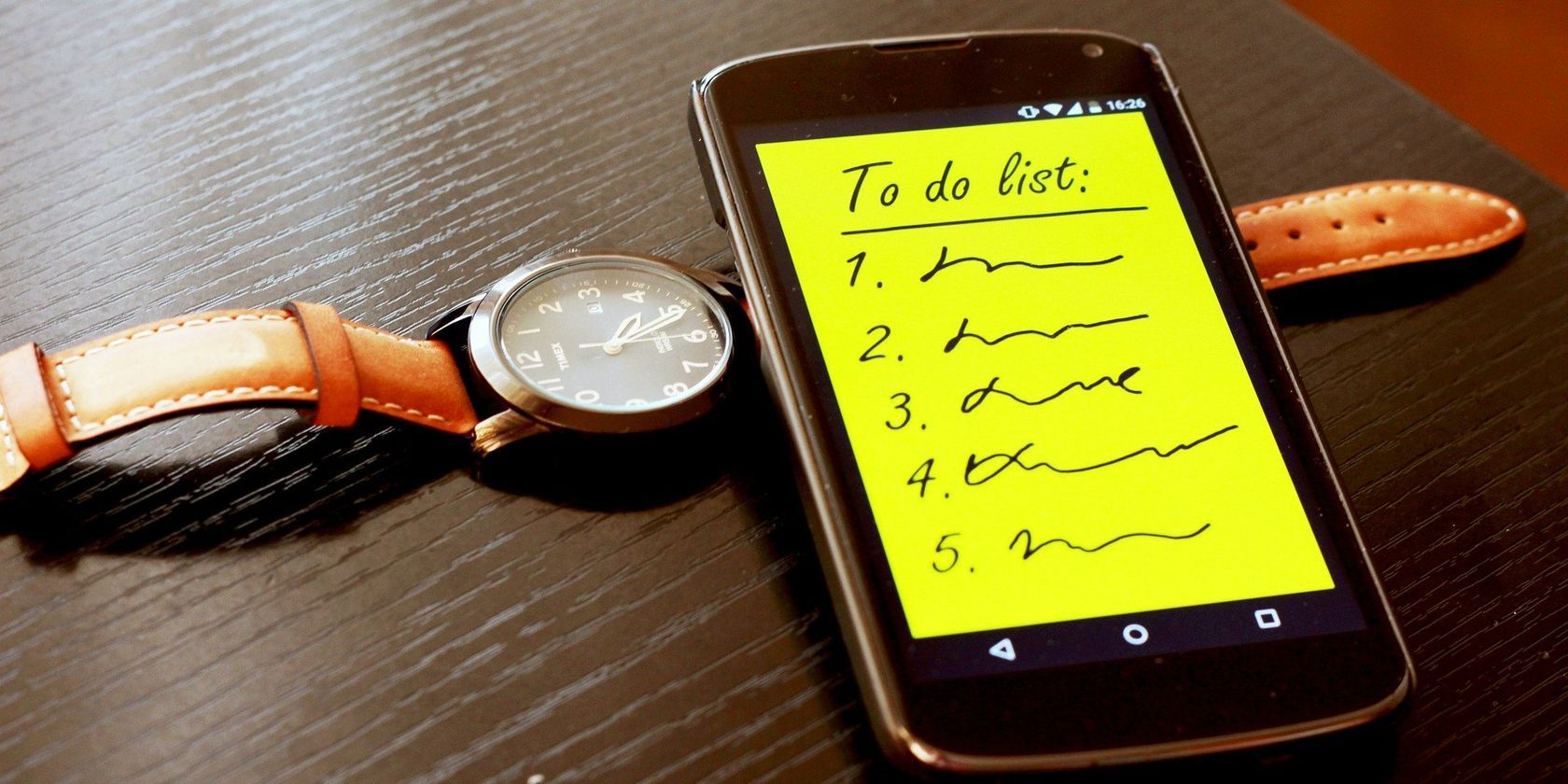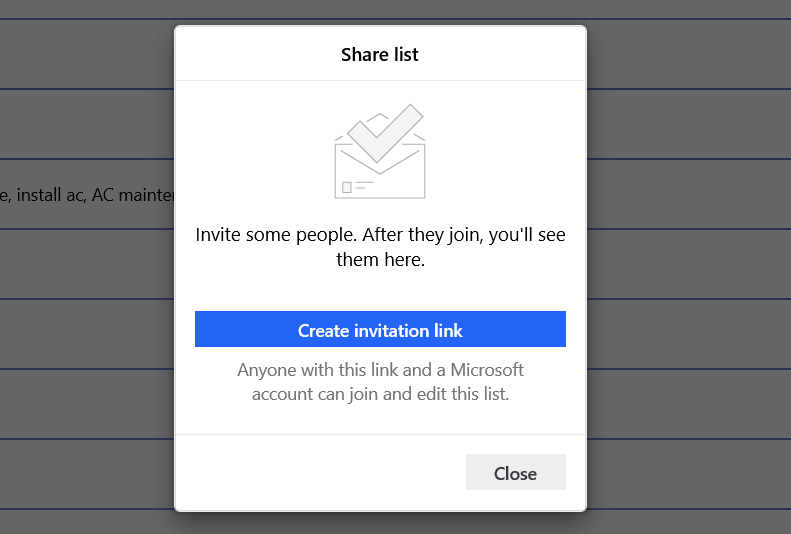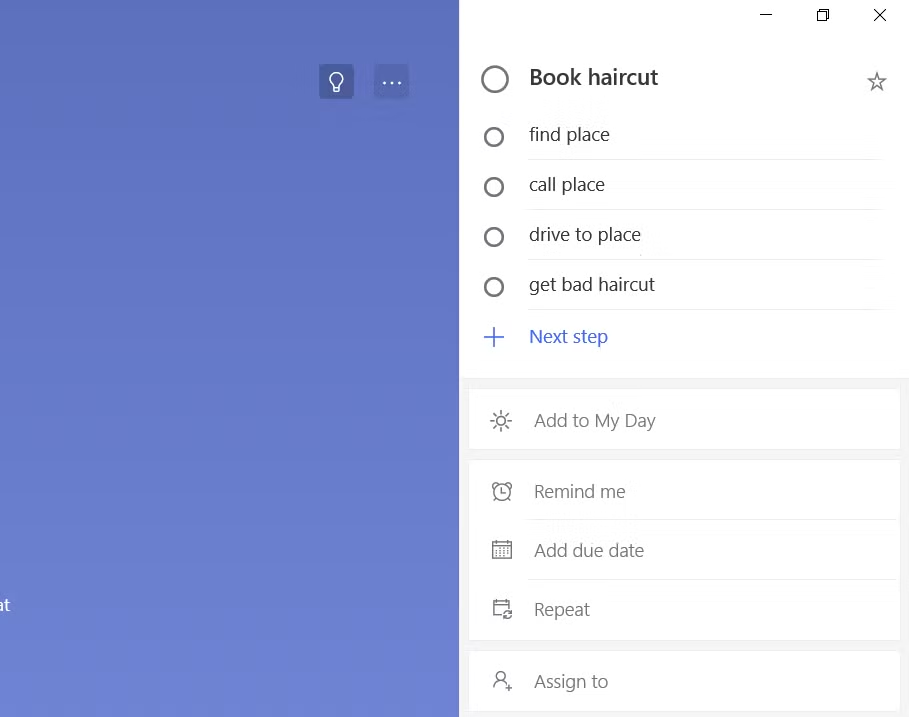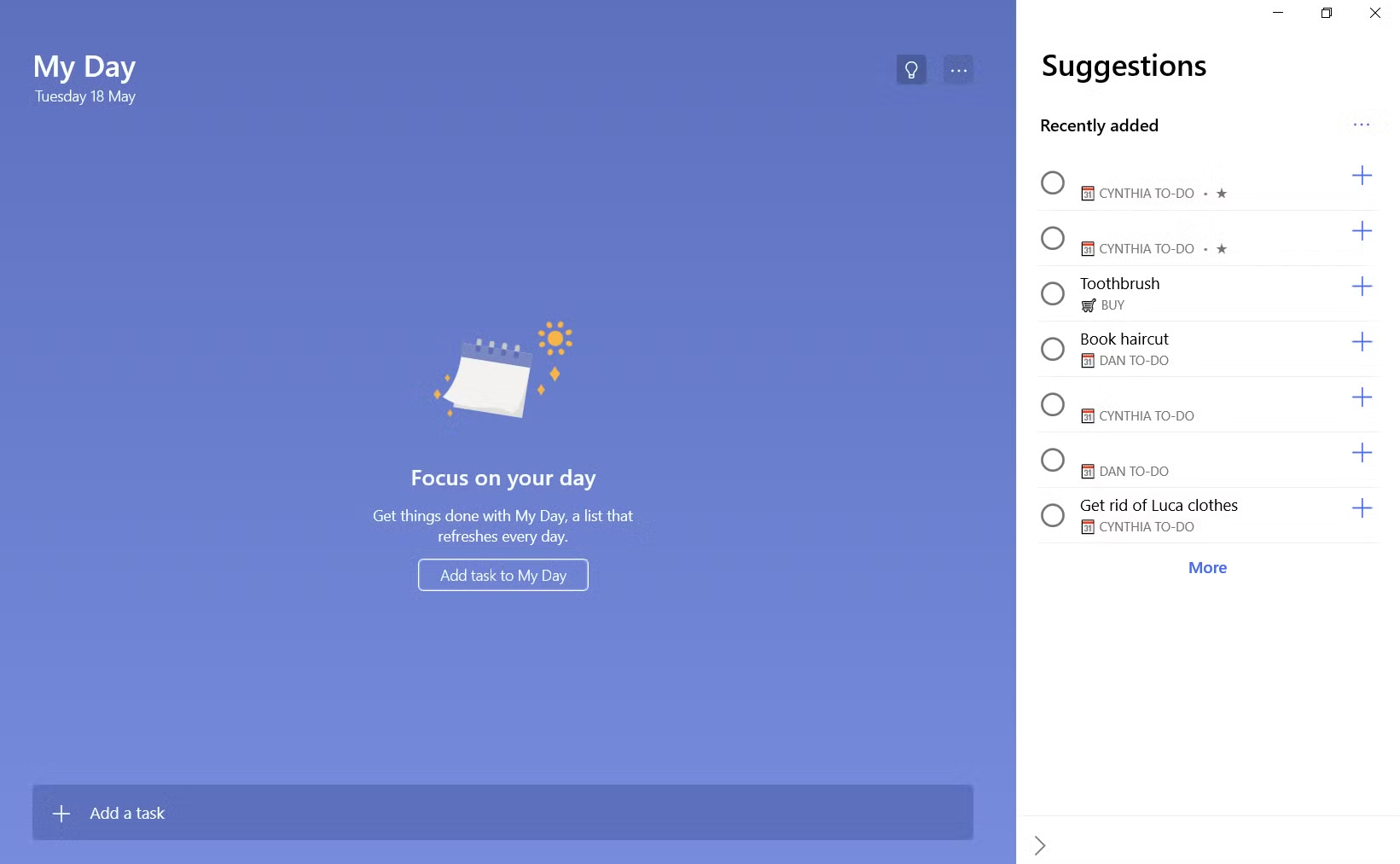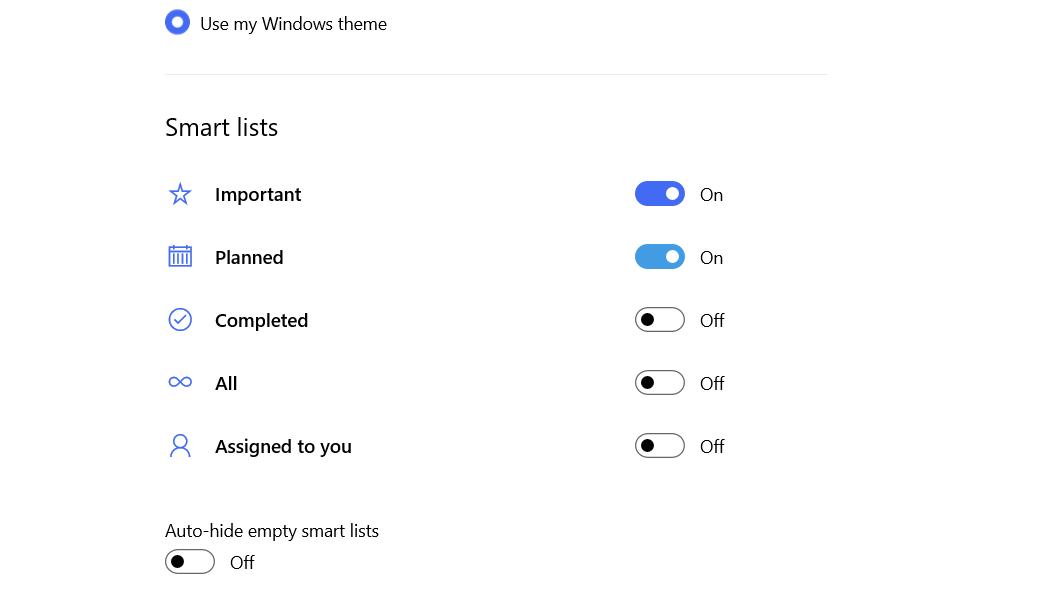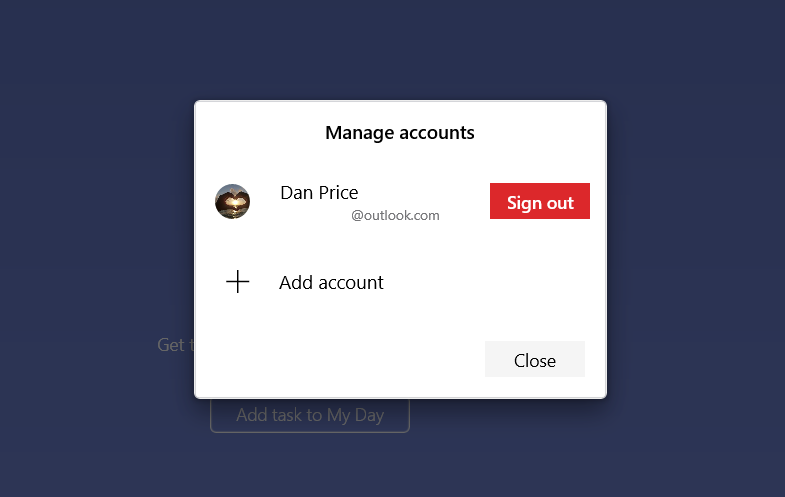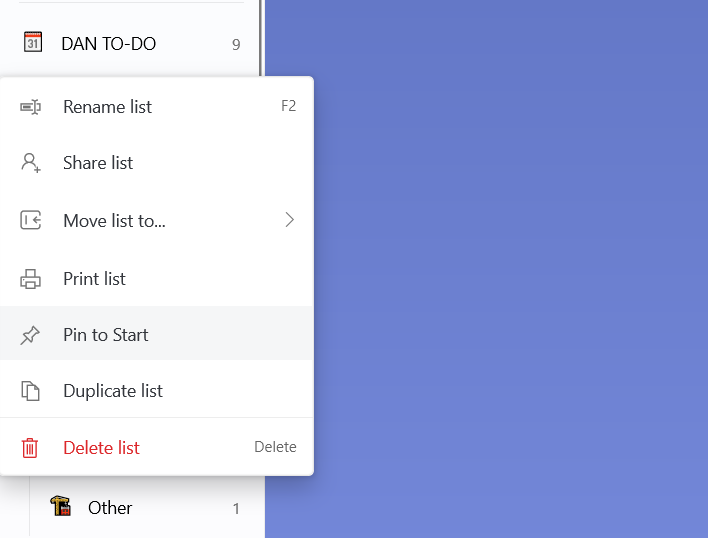Microsoft To Do celebrated its fourth birthday in April 2021. The app has come a long way since being launched as an underwhelming successor to Wunderlist.
It's now tightly integrated with the Windows operating system and packs a lot of features into a lightweight design. Here are some tips for using Microsoft To Do.
1. Collaboration and Shared Tasks
Microsoft To Do lets you share content with other users. You cannot share individual tasks, but you can give them access to the to-do lists you have created.
If you give another person access, they will be able to view and edit the list's contents. To share a task list with another user from the desktop app, right-click on the name of a to-do list and select Share List.
On mobile, tap the Add User icon in the upper-right-hand corner. You'll receive a link that you can share with other users. Tap on More Options to limit access and manage members.
2. Sub-Tasks on Microsoft To Do
Sub-tasks were a core feature of Wunderlist that didn't make it over to the first iteration of Microsoft To Do. But the app has now supported sub-tasks for a couple of years. Called Steps, they allow you to add a series of to-do items under a single parent task.
You can use Steps in many ways. For example, they are useful if you want to control the workflow of a group of people who are all working on one project, but they also serve as bullet point reminders for you to jot down quick thoughts on a topic.
The number of sub-tasks remaining is shown under the main to-do item in the task list.
3. Microsoft To Do Keyboard Shortcuts
Microsoft To Do's list of shortcuts is short but effective. The app supports all the most important actions. The complete list of shortcuts on Microsoft To Do is:
- Ctrl + N: Add a new task
- Ctrl + L: Create a new list
- Ctrl + T: Add a task to My Day
- Ctrl + D: Complete a task
- Ctrl + F: Search
- Ctrl + R: Sync
- Ctrl + 1: Open the sidebar
4. Microsoft To Do Integration With Cortana
Microsoft To Do has integration with Cortana. The integration allows you to use Microsoft To Do from any Cortana-enabled machine, including Windows, Android, iOS, and smart home devices.
When you use Cortana with Microsoft To Do, you will have the option to create your to-do lists and reminders directly on the app rather than in Cortana. Cortana can also read out your tasks in My Day and other lists you have made.
Of course, Microsoft To Do is not the only to-do app that can sync across your devices.
5. Flagged Emails in Outlook
If you have a work or school account with Microsoft, Microsoft To Do integrates with flagged emails on the Windows Outlook app or the web. Sign into To Do and Outlook with the same account, and you'll see a pop-up asking if you want to enable the feature.
Once it's up and running, any emails you flag will appear on My Day as a task. If you want to add extra importance to a given task, mark the email flag as high-priority; it will appear starred in the To Do app.
Any flagged emails can be renamed, given due dates, and given reminders.
6. Manage Your Day
You can use Microsoft To Do in many different ways, depending on the type of content you store in the app. If you use the app as a day-to-day task manager, you will probably find the My Day list to be one of its most useful features.
In addition to flagged emails in Outlook appearing on the list, you can also add any other tasks onto it. To add a to-do item to My Day, open the task in question (on desktop or mobile) and select Add to My Day.
The My Day list also offers suggestions on what you should add. On the desktop, go to the My Day list and click For Today in the upper right-hand corner. On mobile, open My Day and tap the icon at the bottom of the screen.
The suggestions are based on recently added tasks and tasks that have a due date of today. The app will not make suggestions for tasks that have reminders set for today. You can even sync your Google Calendar to the Microsoft To Do app.
7. Add Attachments to Tasks
You can add files to Microsoft To Do tasks. The attachments are available on all app versions, providing a great way to share important documents between your devices.
Microsoft has capped the file size at 25 MB (just like most email services). If you need to send a large file, you will need to look elsewhere. To attach a file, open the task in question and click on Add a File.
8. See Your Week Ahead
You can see your upcoming tasks using the Planned smart list. The Planned section is split into parts such as Earlier, Today, Overdue, and Later.
Your Later tab shows upcoming tasks for the next five days; Overdue shows tasks you should have already completed but which haven't yet been marked as such.
To turn on the smart lists, open the To Do app on your desktop, then click on your profile picture and go to Settings > Smart Lists. Toggle the sliders next to the lists you want to enable.
9. Account Switching
With account switching, you can access both your work and personal Microsoft accounts and jump between them with ease.
To set up account switching on Windows, click on your profile picture in the top left-hand corner, select Manage Accounts, and hit Add Account. On Android, tap on the More menu (the three horizontal lines in the left-hand corner), then tap on your email address and select Add Account.
10. Live Tiles
If you're a Windows 10 user, you can take advantage of Microsoft To Do's support for live tiles. You can pin as many lists to the Start menu as you wish. To pin a list, open the To Do app, right-clicking on the list in question, and select Pin to Start.
Unfortunately, you cannot complete tasks from the live tile. Clicking on the tile takes you directly to the list in the main app.
Try Microsoft To Do
If you're itching for a new task management app, it's time to give Microsoft To Do a chance. It's become a worthy tool in the company's suite of productivity tools and perfectly complements the more complex Microsoft OneNote.

